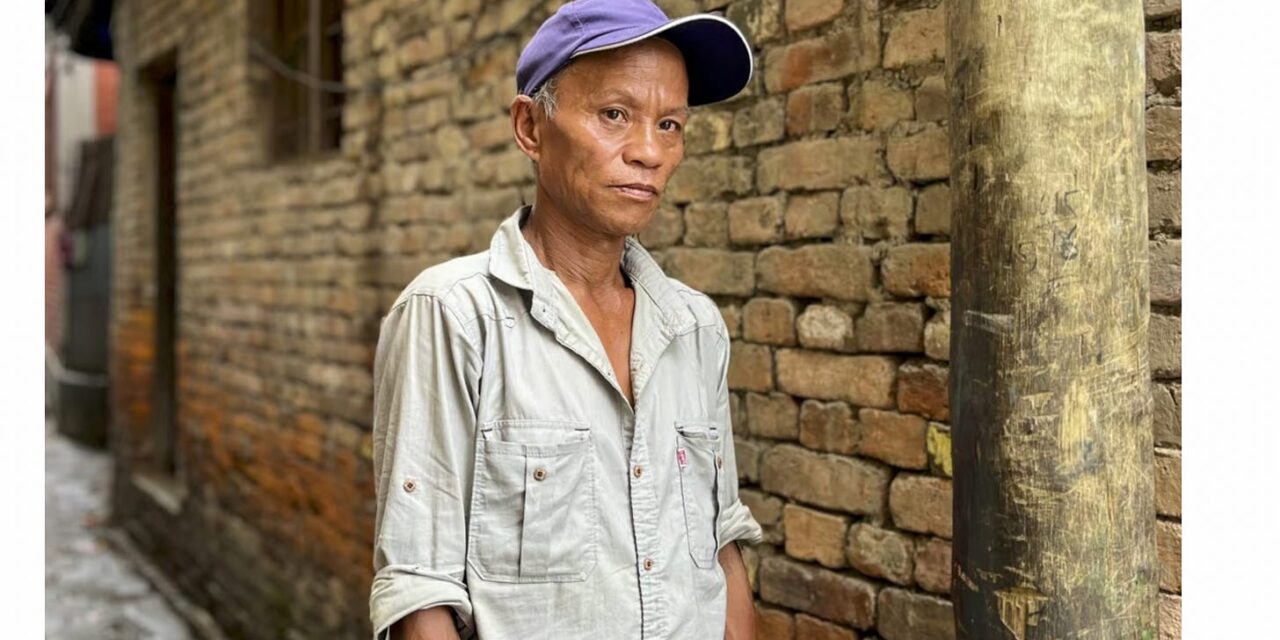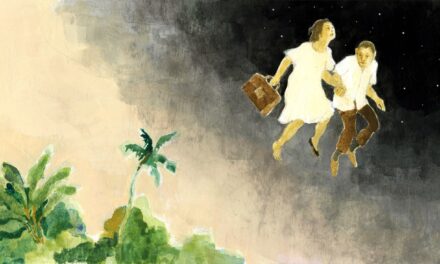Curated by FG Contributor Samiha Hossain
Kanchi Maya Tamang, a 55-year-old transgender woman in Kathmandu, says she often dresses like a man to avoid harassment. Photo: Bibek Bhandari
Sapana Chaudhary, 55 and a parent-of-three, identifies as a transgender woman. At 17, she was forced by her parents to marry a girl around the same age. Chaudhary is one of many LGBTQ Nepalis over the age of 50, some of whom have been married against their will or to meet social norms, struggling to share in the gains made in law and social recognition in recent years. Chaudhary said her three children have relentlessly urged her not to dress as a woman, while her son and daughter-in-law have asked her to move out
My son tore all my women’s clothing and said I bring shame to the family. But what do I do? This is who I am. -Sapana Chaudhary
Nepal is touted for its progressive LGBTQ laws in a conservative region. A new republican constitution enacted in 2015 was hailed for granting equal protection to LGBTQ citizens. In a landmark order in June, Nepal’s Supreme Court allowed LGBTQ couples to register to get married under a temporary provision – another first in South Asia – until the country passed a marriage equality law. However, a district court in Kathmandu has refused to register a transgender woman and a heterosexual man – citing the law that only allows marriage between a man and a woman. Rights activists say marriage equality has fallen to the wayside due to unwilling conservative lawmakers and bureaucratic hurdles.
Sukumaya Magar, 52, lived with her lesbian partner for nearly three decades until she died three years ago. As the relationship was not legally recognised by the state, she’s unable to receive the monthly allowance provided to widows by the government. She is also too young to be eligible for a state social security allowance reserved solely for single women over the age of 60 – leaving her with virtually no source of income.
If I were married to a man and widowed, I would have received the government allowance [for widows] without any issue. It’s very sad to be discriminated against because I loved and lived with another woman, when the law says we are equal. -Sukumaya Magar
The older LGBTQ community also cites income disparities, harassment and ageism – even within the activist community. Sarita KC, the executive director of Mitni Nepal, who identifies as bisexual, acknowledged that the country’s LGBTQ movement had previously overlooked older individuals and their specific needs.
We need to document their struggles because we’ll also get there some day. We’re also gradually advocating for their rights and well-being with the authorities, as many officials are almost unaware about their existence. -Sarita KC
Car is seen on the site of a shooting, in the small Bosnian town of Gradacac, Bosnia, Friday, Aug. 11, 2023. Police in Bosnia launched on Friday a major chase for a man who claimed to have shot and killed his wife while broadcasting it live on Instagram. (AP Photo)
Protests were held simultaneously in several Bosnian cities including in Sarajevo, where a huge crowd of people walked through the city center to press for more protection for women, curbing of violent media content, and control of police work in cases of violence. Participants carried banners reading “Silence is approval,” “We won’t live in fear” or “Stop femicide.” They also held up a huge banner reading “Sarajevo against violence,” echoing a slogan of monthslong street protests in neighboring Serbia.
We are horrified by the fact that the murder of a woman was livestreamed via a social network, which is one of the latest attacks in a streak of femicide and severe cases of gender-based violence in Bosnia and Herzegovina. Femicide, the intentional killing of women and girls based on their gender, represents a glaring and grave violation of human rights. -Stephane Dujarric, U.N. spokesman
Bosnia’s citizens were angered in particular because of reports that the women who was killed in the northeastern town of Gradacac had reported harassment and violence to the authorities, and because the shooter had a police record. Violence against women is widespread in Bosnia and elsewhere in the Balkans where societies are mainly conservative and male-dominated.
Global Voices spoke to Matt Forouzandy, an Iran-born queer Persian-Canadian interdisciplinary artist, and curator, the co-founder and artistic director of the 3.19.27(2) Foundation, and advocate for LGBTQ+ rights in Iran, who currently lives in Canada. Forouzandy speaks about how the situation surrounding women, gender and queer rights has not improved in any way for the community inside the country, but things seem to evolve slowly within the Iranian diaspora.
Forouzandy mentions the presence of the Iranian queer community on the front lines of the struggle in the “Woman, Life, Freedom” uprising. He believes the Iranian LGBTQ+ community can bring discussions on social justice and pluralism to the opposition. Yet, he still sees the queer community being tokenized by some of the opposition groups.
The Iranian queer community’s demands are not just about individual freedom, but about social justice and pluralism. Indeed, the queer community’s presence and voice not only challenge the regime’s ideology, but also contribute to the diversity and creativity of the opposition. -Matt Forouzandy
The underground nature of the queer community in Iran makes it difficult to speak about it accurately, says Forouzandy. However, he notes many examples of Iranian society’s awareness of LGBTQI+ increasing such as photos and videos of people from the queer community who brought their handmade LGBTQI+ flags to the streets of Iran and lesbian couples and gay couples kissing each other in front of Iranian landmarks. Despite the Islamic Regimes’s attempts to silence the community, they continue to fight for their visibility.
PHOTOGRAPHY BY GLODI MIESSI
Co-founded by Lady Phyll (Phyll Opoku-Gyimah) in 2005, UK Black Pride’s (UKBP) mission is simple: strength through unity. It began as a safe space for Black queer women and soon became an annual celebration of LGBTQ+ individuals from African, Asian, Caribbean, Latin American, and Middle Eastern backgrounds. Since then, it has grown into Europe’s largest celebration for queer BIPOC, last year attracting over 25,000 attendees in its first in-person celebration after COVID-19.
UKBP’s theme of this year’s protest and celebration is LEGACY. The organisation states: “LEGACY symbolises 18 years of awe-inspiring progress. It pays homage to the giants who paved the way for us and embraces the responsibility of empowering future generations to take ownership and fearlessly push for change.”
UKBP is important because it offers the community a space where we truly feel seen and validated. As Black queer people, we so often have to compromise ourselves to fit into certain spaces. So having a space where our intersecting identities are celebrated is of high importance. We have a space where we can just be ourselves. – Sam, 22-year-old content creator
Despite UKBP being founded in 2005, Black people in Britain have been celebrating themselves at Pride celebrations for decades. 54-year-old Marc Thompson, Director at The Love Tank, and co-founder of PrEPster and Black & Gay Back in the Day, emphasizes the importance of legacy and recognizing the efforts of those that came before. Sam is also humbled by the work done by generations before.
It’s important to know your own history because you don’t know where you will go in the future unless you can recognize your past…It’s important that as Gen-Z we acknowledge how far we have come; there have been so many sacrifices that have gotten us to this point. -Sam
In its 18-year run, UK Black Pride has evolved from a pioneering initiative into a transformative force that inspires new generations of activists and advocates.
Danielle Mason, the head curator of ‘Where are all the women? Celebrating Women in Indigenous Art,’ says she thinks she would have been more motivated to create herself if she was aware of the Indigenous women contributing to this exhibition. She hopes it sparks inspiration in others. (Janell Henry/CBC)
Danielle Mason, from Peguis First Nation, about 180 km north of Winnipeg in Canada, is the collections assistant and head curator of the “Where are all the Women? Celebrating Indigenous Art” exhibition at the Manitoba Indigenous Cultural Education Centre (MICEC). The exhibition, which runs until mid-September, is the second of 10 hosted by MICEC as part of a series featuring work from the thousands of informational resources in the centre’s collection, including over 15,000 books, artifacts, digital media and fine art in all mediums.
I always found myself asking that question because I didn’t see myself as an artist represented in a lot of sort of institutional spaces. -Danielle Mason
Mason said she thinks she would’ve been more motivated to create herself if she was aware of the Indigenous women contributing to the exhibition, and hopes it sparks inspiration in others. She says the collection at MICEC was started by Cree scholar Verna J. Kirkness, who was a leader in Indigenous language, culture and education and had a couple of books in her office that she wanted to share.
I wasn’t seeing Indigenous women represented really until much, much later on, when I was really, really digging for it. -Danielle Mason
Growing up, visual artist Jackie Traverse, whose work is featured in the exhibition at MICEC, also felt the lack of female representation in cultural institutions. Traverse says she started drawing when she was four years old but didn’t become a full-time artist until 2009 – she felt a lot of people would dismiss her because she’s a woman saying she’s an artist. But through the highs and the lows, she says it was her three daughters and granddaughter that she did it for, because she wanted them to have a better life. Traverse, whose work is featured around WInnipeg, often draws women and says her daughters and granddaughter are in her mind when she’s making them. She says she wants to see all Indigenous women portrayed “in a good way.”
Erica Daniels, a filmmaker, CEO and executive producer of Kejic Productions, was commissioned to create a film about Indigenous women artists as part of “Where are all the Women? Celebrating Indigenous Art.” She interviewed four artists and created a video that will be put into MICEC’s extensive archives.
It’s so important that we as Indigenous people are telling our own stories because no one could tell them like you can and making sure that truth gets out there. -Erica Daniels
Samiha Hossain (she/her) is a student at the University of Ottawa. She has experience working with survivors of sexual violence in her community, as well as conducting research on gender-based violence. A lot of her time is spent learning about and critically engaging with intersectional feminism, transformative justice and disability justice.
Samiha firmly believes in the power of connecting with people and listening to their stories to create solidarity and heal as a community. She refuses to let anyone thwart her imagination when it comes to envisioning a radically different future full of care webs, nurturance and collective liberation.




